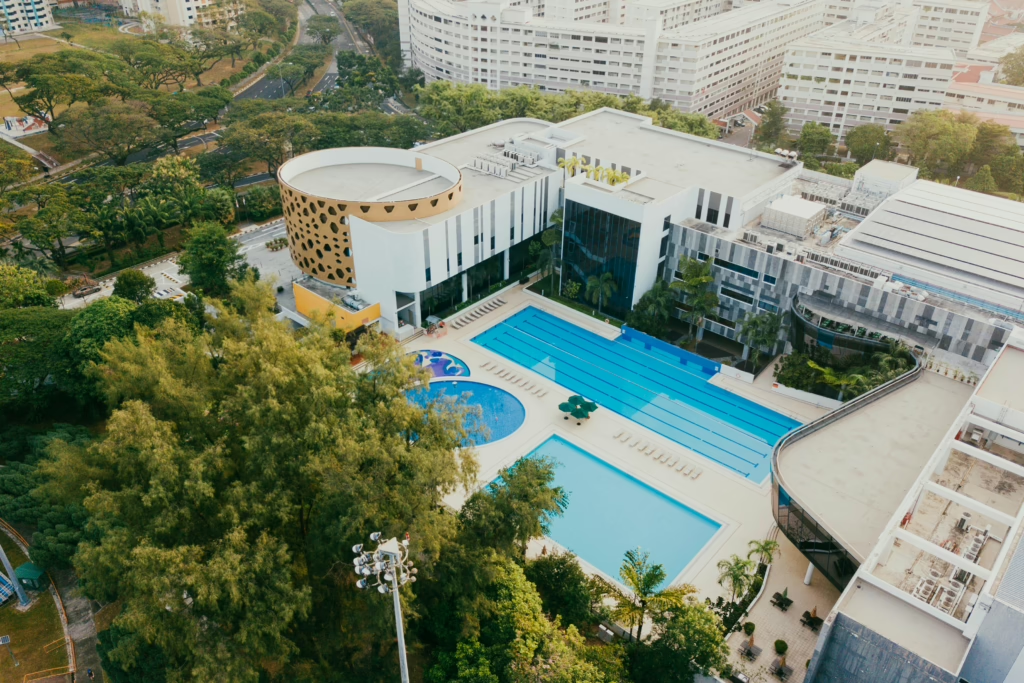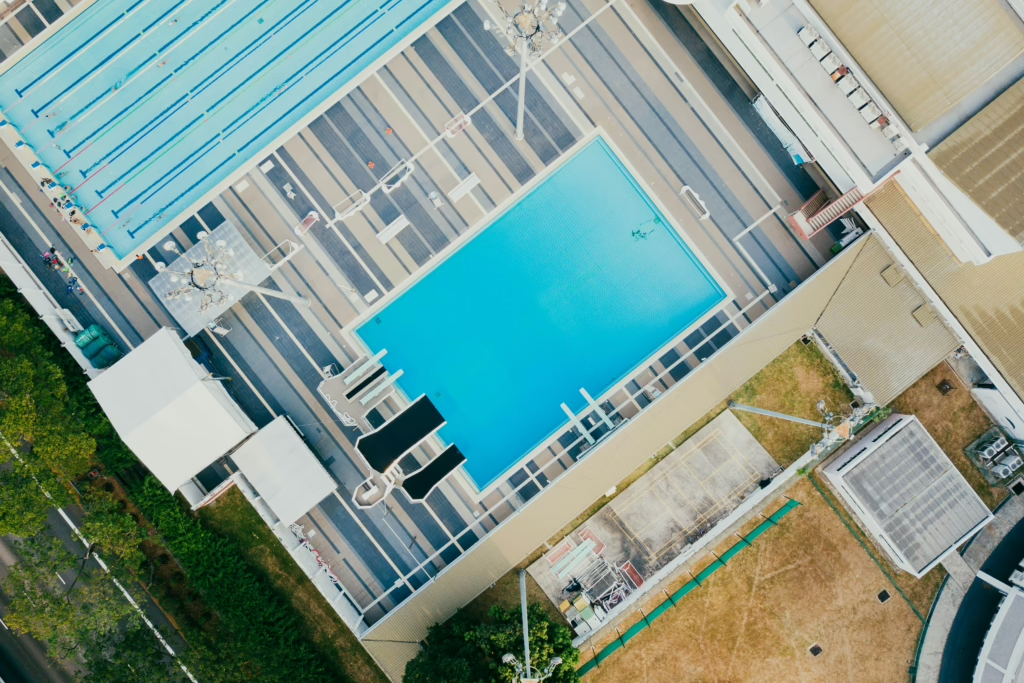Ever gazed into your once-crystal-clear pool only to find it’s taken on an unwelcome green tint? You’re not alone. As a San Diego pool owner, you’re fighting a constant battle against one of nature’s most persistent organisms: algae. The combination of our year-round sunshine, warm temperatures, and hard water creates the perfect storm for these unwanted aquatic guests.
If you’re searching for “algae removal near me,” finding a reliable and professional service provider can make all the difference. Here’s a guide to understanding why San Diego pools are particularly vulnerable to algae, what you can do about it yourself, and when it’s time to call in the professionals.
Let’s dive into why that sparkling backyard oasis of yours might be more susceptible to turning green than pools in other regions, and what practical steps you can take to keep it crystal clear all year round.
Why Your San Diego Pool Is an Algae Magnet
1. That Famous Southern California Sunshine
We all love San Diego’s abundant sunshine – and unfortunately, so does algae. Those microscopic organisms are basically tiny solar-powered plants, using photosynthesis to grow and multiply at astonishing rates when they have access to plenty of sunlight.
Unlike pools in cloudier or more seasonal climates, your San Diego pool gets a steady diet of intense sunlight almost every day of the year. Without proper preventative measures, this creates the perfect conditions for algae to thrive regardless of the season.
2. Our Year-Round Warm Temperatures
While friends in cooler climates get a break from algae growth during winter months, we enjoy (or endure) an almost year-round growing season. Our mild climate means water temperatures rarely drop low enough to naturally slow algae growth.
This consistent warmth means you can’t just “wait out” algae season – in San Diego, algae maintenance is a year-round commitment that requires consistent attention to keep your pool sparkling clean.
3. San Diego’s Notorious Hard Water
Let’s talk about something many local homeowners are familiar with – our region’s mineral-rich hard water. Those minerals don’t just leave spots on your glassware; they also interfere with chlorine’s effectiveness and provide additional nutrients that algae can use to grow.
Combined with our high evaporation rates that necessitate frequent refilling (and thus, introducing more minerals), our water supply creates unique challenges for maintaining proper pool chemistry that inhibits algae growth.
4. Our Outdoor Lifestyle Means Heavy Pool Use
There’s a reason we live in San Diego – to enjoy that incredible outdoor lifestyle! But heavy pool use introduces oils, lotions, sweat, and other organic materials that break down chlorine and provide food for algae.
The more your pool gets used (and who doesn’t want to use their pool in our beautiful climate?), the more vigilant you need to be about maintenance to prevent algae from taking hold.
Know Your Enemy: Common Algae Types in San Diego Pools
1. Green Algae: The Usual Suspect
Green algae is what most people picture when they think of pool algae – that slimy, green film that can turn your pool water cloudy and uninviting almost overnight. It’s the most common type we see in San Diego pools.
This algae variety thrives in our sunny conditions and can spread rapidly when chlorine levels drop, even briefly. The good news is that it’s also the easiest type to treat with standard chlorine shock treatments and thorough brushing.
2. Yellow/Mustard Algae: The Sneaky Invader
Don’t be fooled by its less intimidating color – yellow or mustard algae is actually more difficult to eliminate than its green cousin. It often disguises itself as pollen or sand in shaded areas of your pool.
This variety is particularly resistant to normal chlorine levels and requires specialized treatment approaches. It’s also highly contagious, hitching rides on pool toys, equipment, and even swimwear to spread from pool to pool.
3. Black Algae: The Stubborn Squatter
If you spot dark, spot-like patches on your pool surfaces that seem impossible to remove, you’re likely dealing with black algae. This variety isn’t just sitting on surfaces – it literally roots itself into porous materials like plaster or concrete.
Black algae forms protective layers that resist chlorine, making it extremely difficult to eradicate without professional help. Its ability to penetrate deeply into surfaces means it can return even after appearing to be eliminated if not properly treated.
Your Battle Plan: Preventing Algae in San Diego Pools
1. Commit to Consistent Cleaning
The foundation of algae prevention is simple but requires dedication: regular physical cleaning. Brushing pool walls and floors weekly disrupts algae before it can establish colonies, while daily skimming removes organic matter that feeds algae growth.
Make this cleaning routine as non-negotiable as brushing your teeth. In our climate, even a week of neglect can give algae the foothold it needs to create a much bigger problem.
2. Optimize Your Filtration System
Your pool’s filtration system is your first line of defense against algae. In San Diego’s warm climate, running your filter 8-12 hours daily ensures proper water circulation that prevents stagnant areas where algae thrives.
Don’t forget to regularly clean or backwash your filter – clogged filters can’t effectively remove the microscopic algae particles that lead to blooms. Consider upgrading to a variable-speed pump that allows for longer running times with lower energy costs.
3. Master Your Water Chemistry
Maintaining balanced water chemistry isn’t just about comfort – it’s essential for preventing algae. Aim to keep your levels within these ranges:
- Chlorine: 1-3 ppm
- pH: 7.4-7.6
- Alkalinity: 80-120 ppm
- Calcium hardness: 200-400 ppm (particularly important with our hard water)
Test your water at least weekly (twice weekly during summer), and adjust as needed. Consider using a phosphate remover periodically, as phosphates are a major food source for algae and are common in our water supply.
4. Make Shock Treatment Part of Your Routine
Regular shock treatments are especially important in San Diego’s climate. Plan to shock your pool every 1-2 weeks during summer and at least monthly during winter.
After heavy use (like pool parties) or significant rain, add an extra shock treatment to eliminate contaminants before algae can take advantage of them. Evening is the best time for shocking, as our intense sunlight rapidly degrades chlorine.
5. Consider Advanced Protection Measures
In our unique climate, standard prevention may need reinforcement. Adding a quality algaecide to your weekly maintenance routine provides an extra layer of protection, especially during the warmest months.
Installing a pool cover can significantly reduce both debris accumulation and sun exposure when your pool isn’t in use. UV-sanitizing systems can also be highly effective supplements to traditional chemical treatments in our sunny environment.
When Algae Strikes: Your Recovery Plan
1. Start With Aggressive Brushing
If you spot algae beginning to form, grab your pool brush immediately. Thorough brushing disrupts the algae’s cell walls, making it more vulnerable to chemical treatments.
Pay special attention to shaded areas, steps, corners, and behind ladders – these are algae’s favorite hiding spots. Use a stiff brush for concrete or plaster pools and a softer brush for vinyl or fiberglass surfaces.
2. Apply the Right Algaecide for Your Situation
Not all algaecides are created equal. For green algae, copper-based products work well. For yellow algae, look for quaternary ammonia compounds. Black algae often requires specialized treatments with higher concentrations of active ingredients.
Always follow the manufacturer’s instructions precisely – more is not better with pool chemicals and can actually cause other water balance issues.
3. Shock at Higher Levels
When battling an active algae bloom, standard shock treatment levels won’t cut it. For light green algae, double your normal shock dose. For serious infestations, you may need to triple or quadruple it.
Run your filter continuously after shocking until the water clears, and be prepared to clean your filter frequently during this process as it removes dead algae.
4. Consider Professional Intervention
Some situations call for expert help, particularly with stubborn black algae or recurring infestations despite your best efforts. Professional pool services have access to commercial-grade treatments and specialized equipment that can resolve persistent problems.
When selecting a service, look for providers with specific experience in algae removal in the San Diego area who understand our unique regional challenges.
When to Call the Professionals
Sometimes DIY methods just aren’t enough, especially when dealing with:
- Persistent black algae infections
- Recurring algae despite proper maintenance
- Severely neglected pools with established algae colonies
- Pools with outdated equipment that can’t maintain proper circulation
- Situations where water chemistry consistently falls out of balance
Professional services like PoolLogic San Diego offer specialized treatments, equipment, and local expertise that can solve even the most stubborn algae problems and help establish a maintenance plan tailored to your specific pool and our regional conditions.
Frequently Asked Questions:
1. Why does my pool get algae even with proper chlorine levels?
In San Diego’s sunny climate, chlorine degrades quickly. What tests as adequate in the morning may be insufficient by afternoon. Our hard water and high UV exposure require more vigilant monitoring and potentially higher chlorine levels than in other regions.
2. How quickly can algae take over my pool?
In our warm climate with abundant sunshine, a pool can develop visible algae in as little as 24-48 hours if conditions are right. This is why consistent maintenance is so crucial – small lapses can lead to big problems very quickly.
3. Is it safe to swim in a pool with algae?
While most algae aren’t directly harmful to swimmers, they can harbor bacteria and other microorganisms that might cause infections or skin irritations. Additionally, algae can make surfaces slippery and reduce visibility in the water, creating safety hazards.
4. How can I prevent algae when I’m away on vacation?
Before leaving, shock your pool, ensure chemical levels are properly balanced, add a maintenance dose of algaecide, and consider hiring a service to check on your pool during extended absences. Automatic pool covers can also help reduce algae growth while you’re away.
5. Why does my pool get algae shortly after professional cleaning?
This often indicates incomplete treatment (particularly with black algae that can survive in porous surfaces) or underlying issues with circulation, filtration, or water balance that need to be addressed. A quality professional service should help identify and resolve these root causes.
Final Thoughts
Keeping your San Diego pool algae-free is an ongoing process that requires understanding our unique regional challenges. With consistent maintenance, proper chemical balance, and timely intervention at the first sign of problems, you can enjoy a crystal-clear pool year-round despite our algae-friendly climate.
If you’re looking for dependable “algae removal near me,” PoolLogic offers comprehensive services tailored to your needs. Our team understands the specific challenges San Diego pool owners face and provides customized solutions that keep your pool sparkling clean. Contact us today to schedule your next cleaning with our simple 5-minute setup process and enjoy a pristine pool all year round.
Ready for better pool care? Don’t let algae steal your enjoyment of that backyard oasis you’ve invested in. With the right approach and support, your pool can remain the refreshing retreat you deserve even in San Diego’s challenging conditions.



